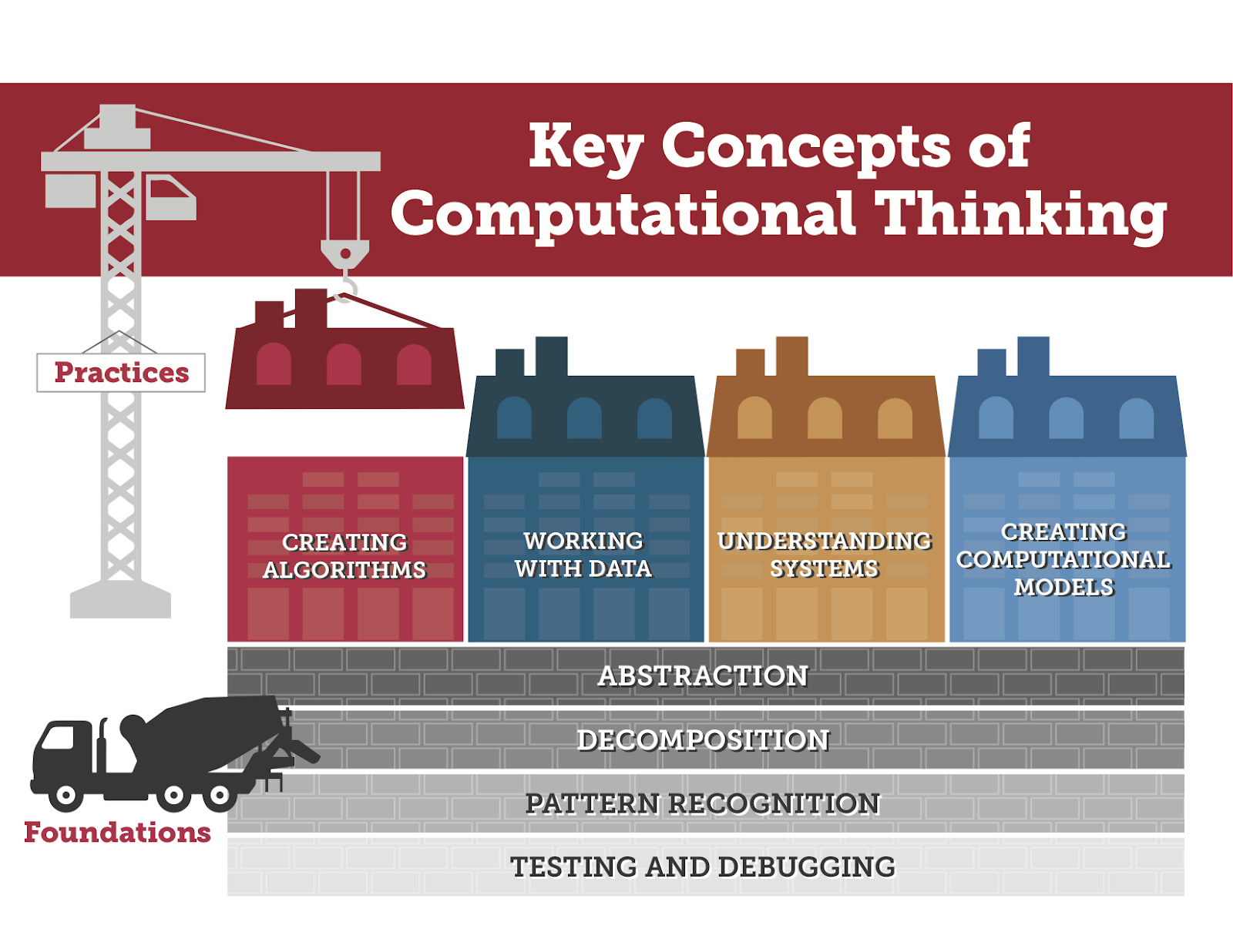
Across the United States and around the world, educators are being called on to help their students prepare for futures in an increasingly computational world. Integrating computational thinking into activities, lessons, and curricula not only supports building new skills, but also enhances learning and engagement in every discipline.
However, there are still many more educators who do not feel comfortable with computational thinking concepts than those who do.
To address this, Digital Promise has led workshops with hundreds of teachers from all academic disciplines to introduce them to computational thinking practices. Drawing from both learning sciences research and feedback from educators, we developed this framework to support teachers in identifying where their students can leverage computational thinking. Within these eight key concepts, teachers of science, math, language arts, social studies, and art have found intersections with what their students are expected to know and know how to do.

The foundations of computational thinking are abstraction, decomposition, pattern recognition and testing and debugging. The practices of computational thinking are creating algorithms, working with data, understanding systems, and creating computational models.
These key concepts of computational thinking are divided into two categories: foundations and practices. Foundations are the cognitive processes necessary to write computer programs. Practices combine the foundations with additional skills and knowledge to solve an applied problem, whether that end result is a computer program, a better comprehension of a biological ecosystem, or an increased appreciation of how human migration patterns relate to geographical landscapes.
Integrating computational thinking is not just another add-on, but can be a true value-add for teachers in any subject area. Take a deeper dive into the eight key elements of computational thinking on the Digital Promise website.
Are you an educator? Show how your students are applying computational thinking by earning Digital Promise Computational Thinking Micro-credentials. The Computational Thinking: Practices stack of educator micro-credentials recognizes educators for creating learning experiences in which students can build competencies with these practices. These micro-credentials are framed around practices because the degree to which students have built foundational skills cannot be assessed until they are manifested through the applied practices.
To earn a micro-credential, teachers submit evidence of student work from classroom activities where they have applied one of the computational thinking practices (note that working with data is divided into two micro-credentials), as well as documentation of lesson planning and reflection.
Be the first to know when new computational thinking resources are released by subscribing to the Digital Promise Action Report. If your school or district would like to partner with us to support professional learning for integrating computational thinking, please get in touch.
We would also love to hear how you see these key concepts come into play in your own work and how you are integrating computational thinking in your district, school, or classroom. Leave a comment below and tell us about it!